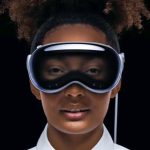Apple Vision Pro arrives: Apple’s long-awaited Vision Pro headset is finally available to buy in-store

Finally, the day has arrived! The much-anticipated Apple Vision Pro headset is now available in the US, hitting the shelves after the preorders kicked off two weeks ago. It’s only 9 AM in New York and tech enthusiasts are already out in full force. In a reminiscent of the frenzy seen back in 2007, people are lining up outside Apple Stores to get their hands on the groundbreaking gadget that promises to revolutionize the tech landscape.
The launch of the Vision Pro could mark a significant milestone for the entire tech industry. Despite efforts from companies like Meta and Samsung, augmented, virtual, and mixed-reality headsets have largely remained niche products, primarily appealing to gamers. Apple aims to change this narrative by positioning the Vision Pro as an essential tool for both work and play, introducing what they term as “spatial computing” – essentially, operating within a 3D virtual space rather than on a traditional computer, akin to scenes from Tony Stark’s workshop.
Unveiled initially at the Worldwide Developers Conference (WWDC) in June 2023, the Vision Pro represents Apple’s bold entry into a new product category since the debut of the Apple Watch in 2015. Positioned as “Apple’s first spatial computer,” it seamlessly integrates digital content with the physical world, prioritizing a seamless and immersive user experience.

Apple Vision Pro headset
Reports suggest that Apple may have already secured approximately 180,000 preorders for the headset, with an expected total sales target of 400,000 units for the year, amounting to a staggering $1.4 billion in revenue. The starting price for the virtual reality headset is $3,499, with the option for buyers to opt for 12-month installment plans.
Although initial reviews for the Vision Pro are mixed, there’s still considerable potential for it to become the wearable tech equivalent of the “iPhone moment” – that pivotal shift in consumer technology. However, Apple faces the challenge of convincing customers that the device justifies its hefty price tag and the inevitable comparisons to looking like you’ve just undergone an eye examination.
The base Vision Pro model, starting at $3,499, includes 256GB of storage and the M2 chip found in some Macs. Apple also offers a 512GB model for $3,699 and a 1TB version for $3,899. Providing a “spatial computing” experience, the headset can function as a virtual reality display for activities like watching movies or allow users to pin various apps and screens while remaining aware of their surroundings.
If you are buying the Vision Pro, Apple recommends using an iPhone or iPad with Face ID to determine the best-fitting size. Additionally, a 12-month financing plan is available, with the $3,499 model costing $291.58 per month. Prescription lens inserts can be acquired separately for $149.
However, with a starting price tag of $3,499, the cost of the product may restrict its appeal to a relatively small segment of individuals, namely avid video game enthusiasts and affluent technology enthusiasts.
The Vision Pro also has the potential to join the ranks of the company’s legendary innovations, even though Apple has not always been the first to venture into a specific device category.
So, what’s the experience like with the Vision Pro?
The headset comes loaded with 600 specialized apps, yet notably lacks support for Meta, Netflix, Spotify, Google, and YouTube. Despite these omissions, famed director and tech enthusiast James Cameron described his demo as a “religious” experience, while other early reviewers expressed a mix of awe and reservations:
Pros: Critics laud the stunning 23-million-pixel visuals, particularly praising the immersive content and theater mode. Additionally, navigating the screen using eye movements is a standout feature, as noted by some reviewers.
Cons: Downsides include challenges with the virtual keyboard, limitations posed by the battery pack, the solitary user experience, potential minimal impact on productivity, and concerns regarding size and weight – reportedly heavier than an 11-inch iPad Pro, according to assessments.
Is there no turning back? Some reviewers, after experiencing the Vision Pro, have expressed feeling that their conventional 2D devices now seem outdated, hinting at the device’s potential to reshape how we perceive and interact with technology.
Check out the video below where Marques Brownlee, renowned as one of the top YouTubers globally, gives his firsthand account after spending a week with Apple’s Vision Pro.




